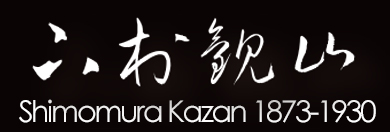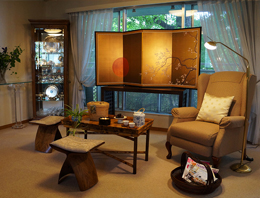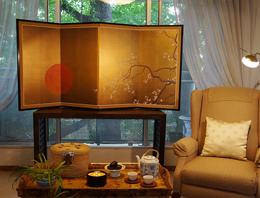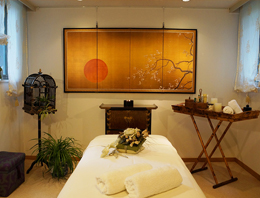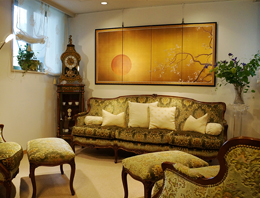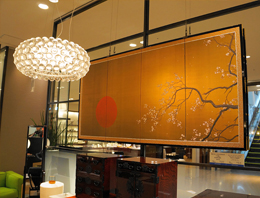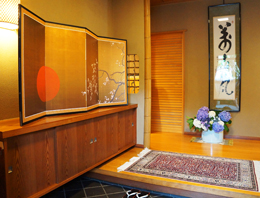明治〜昭和初期の日本画の大家。和歌山生まれ。狩野芳崖、橋本雅邦に師事、さらに東京美術学校に学ぶ。後に同校卒業後助教授に就任。校長の岡倉天心が辞職した際同校を去り、日本美術院設立に参画。1903~1905年にかけて英国に留学し、欧州各地を巡る。その後、横山大観と共に日本美術院を再興した。1917年旧宮内省帝室技芸員となる。大和絵、琳派、宋元画の手法を究め、その卓抜した筆技は近代日本画家中屈指といえる。
Shimomura Kanzan was a master of Japanese painting who lived during the early Meiji to early Showa period. Born in Wakayama Prefecture, Kanzan studied painting under the tutelage of Kano Hogai and Hashimoto Gaho, and also attended the Tokyo Art School (present-day Tokyo University of the Arts). After graduating from the Tokyo Art School, he served as an associate professor there. Following the resignation of Okakura Tenshin, the school’s principal, Kanzan also left the school and participated in the establishment of the Japan Art Institute. From 1903 to 1905, Kanzan studied in the United Kingdom, visiting many countries in Europe. He subsequently worked with Yokoyama Taikan to reorganize the Japan Art Institute. In 1917, Kanzan was appointed an imperial art officer of the then Imperial Household Ministry. He studied various painting styles, including the traditional Japanese painting style, the Rinpa style, and the old Chinese painting style, and his painting skills are considered to be outstanding among modern Japanese painters.



